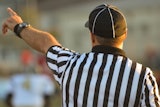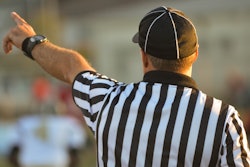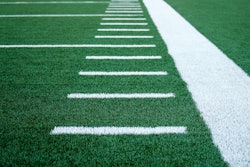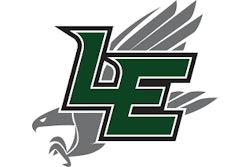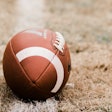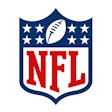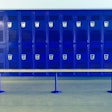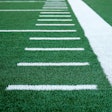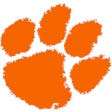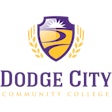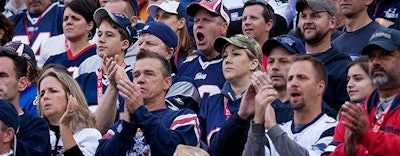
The perception surrounding the modern professional football environment is that unruly fan behavior is escalating, forcing families to stay far away from these increasingly unstable atmospheres. Perpetuating that stigma is a steady flow of videos showing fans fighting at football venues across the country. For example, New England Patriots fan Jaclyn Nugent was punched by New York Jets fan Kurt Paschke at MetLife Stadium last fall. A fan videotaped part of the fight, including the infamous punch, on her smartphone and uploaded it to YouTube. Two months later, it had received more than 350,000 views.
"Incidents used to happen within a venue and no one would really ever know outside of that venue, but because of smartphones and other technology, we're seeing these incidents being more publicized," says Tamara Madensen, associate professor of criminal justice at the University of Nevada Las Vegas and director of the university's crowd management resource council. "Not only can that hurt the venue, but the sports league in terms of its reputation."

Each week, there seems to be a new addition to the fan violence viral video library, and that extends to the collegiate level, as well. At a popular tailgate spot for Nebraska football last fall, law enforcement officials had to clear approximately 3,000 people off the property due to unruly behavior prior to the start of a game against the University of Miami. Close to two dozen people were arrested. One of the officers tasked with keeping the peace had to be hospitalized after being struck by a full can of beer.
Violent fan behavior is a gameday tradition all sports security professionals are trying to limit or eliminate. Ray DiNunzio, the NFL's director of strategic security, has taken a variety of steps during his tenure to ensure the safest environment for the 60,000 to 80,000 fans in attendance at the nearly 300 regular and postseason football games each year. "Any fan misbehavior is unacceptable," DiNunzio says. "We're doing a number of things to respond immediately when troubling things occur, while also taking proactive measures to make sure there are consequences for violations of our fan code of conduct."
BANNED IN THE USA
During the 2013 regular season, DiNunzio estimates there were approximately 8,000 ejections, which is less than half a percentage of total attendance. He expects those numbers to be decreased when 2014's final figures are counted, due in part to a change he implemented league-wide. "Before, if someone violated the fan code of conduct, they were simply ejected," he says. "I suspected we were having a number of repeat violators that we weren't doing anything about."
To rectify that problem, the NFL implemented a temporary stadium ban for anyone ejected for violating the fan code of conduct. Reasons for ejection may include general disruptive behavior, substance impairment that leads to irresponsible behavior, abusive language, interfering with the progress of a game, and verbal or physical harassment of fans. If ejected, a fan must enroll in and complete a fan-conduct-awareness class. That fan must also submit a request to have the ban lifted, showing adequate remorse. But this year, DiNunzio took the ban one step further to hold accountable visiting-team fans who cause trouble: If a fan is banned from one NFL stadium, he or she is banned from all NFL stadiums.
"It's about having consequences, making sure they're significant, and giving the few troublemakers something to think about," DiNunzio says. "Now, they will want to put more effort into controlling themselves or they're not going to see many football games."
The common theme in many incidents is intoxication, and many leagues have set rules of when to cut off alcohol sales. In the NFL, it's after the third quarter, or, depending on the intensity of the rivalry — an Oakland-San Francisco matchup, for example — alcohol sales may cease after halftime. DiNunzio would also like to get fans into the stadium earlier, which would require opening the gates earlier and providing more entertainment value to entice the fan out of the parking lot tailgate party.
Says DiNunzio, "That would solve a number of challenges for us. We'd be able to reduce the amount of uncontrolled alcohol consumption in the parking lots, and we'll be able to get people in the stadium earlier to alleviate some of the congestion we see at the gates 15 to 20 minutes prior to kickoff."
RELATED: Understanding Crowd Dynamics Key to Controlling Fan Violence
On the college level, a different tactic is being used to achieve the same results — selling alcohol inside the stadium. More than 20 college stadiums are now selling alcohol. The thought is that this will not only generate revenue, but eliminate the excessive binge-drinking common during college student tailgating. There is the risk of already intoxicated young fans further impairing their judgment with the additional access — which could lead to an increase in incidents — but if executed properly, the likelihood of increased fan violence is low, according to Madensen.
"If it's done in a responsible way, with clear policies and well-trained people, it's unlikely to produce a tremendous amount of incidents that you haven't seen before," she says. TEAM Coalition, for example, advocates for certain parameters to be in place prior to someone being approved to drink inside a college stadium, offering training to help facility operations personnel with responsible alcohol distribution.
RELATED: Selling Alcohol to Fight Alcohol Abuse
TECH SUPPORT
Jorge Costa has been the senior vice president of ballpark operations for the San Francisco Giants for close to three decades, and the biggest difference-maker in how he approaches security has been the evolution of technology. Technology has allowed venues like AT&T Park to gather trends and collect data, identifying problem areas or games, which helps Costa in his planning and allocation of resources. "Incident tracking has made a huge difference," Costa says. "We can track response time, how quickly we got to a problem, anticipate future problems, text to security."
Costa believes incident tracking is something that would be beneficial to athletic venues on the collegiate and high school levels, as well. "I would absolutely recommend that schools have some form of incident tracking," he says. "That's vital, because the ability to capture data in the moment and respond to it is key. It's the lifeblood of any venue or operation."
DiNunzio agrees. "Technology is playing a really big role," he says. "In terms of reacting, I'm using technology to ensure that we have the ability to capture and review in real time things that have happened in our stadiums, even outside our stadiums. With the current state of technology, there's no excuse for not having video recording of any incident that has occurred, whether in the seating bowl or concourses."
One of the things DiNunzio is looking to implement league-wide is a policy ensuring a sufficient number of cameras that have unobstructed views of every seat in the stadium, all the plaza levels and in the concourses. This has been done, most notably, at MetLife Stadium, which was equipped with the technology for last year's Super Bowl. "There were a number of incidents that were resolved as a result of having video capture and review," DiNunzio says. "In fact, in some of those incidents the instigator wasn't even present when the responders arrived, but looking at the video recording, we were able to identify and see the person flee the scene as security arrived. It's been very beneficial. It's just a matter of tooling up our stadiums with the best technology and getting this consistently at all our venues."
PHYSICAL PRESENCE
Having the right policies and technology in place are virtually meaningless if you don't have the proper personnel. A rapid response team was created in 2013 at AT&T Park consisting of security guards, guest services professionals and local police officials. Rapid response teams, which can consist of as many as 20 people, are deployed to different levels of the stadium where problems are most likely to occur.
Says Costa, "Having a rapid response team allows you to get to those incidents requiring immediate attention faster, and a lot of times, it will avert a problem or keep it from getting bigger."
DiNunzio explains that some stadiums are employing strike teams, which typically consist of a group of civilians and uniformed and undercover police officers who work in tandem to cover the bowl and perimeter. Undercover law enforcement officials have been known to wear opposing team jerseys to weed out troublemakers, as well. "The strike teams have the ability to deal with virtually any situation, and they have any emergency response tool at their disposal," DiNunzio says.
He has also made it a priority to increase the number of security personnel in the bowl, as well as increase the responsibility of guest services staff inside the bowl. "I'm looking at expanding some of the guest-services responsibilities so they mesh better with security functions in the stadiums," he says. "In this new role, guest services would not only be responsible for making sure properly ticketed fans are in a section, but also for being aware of what's happening in a section, and the only way to accomplish that is to patrol an assigned area of responsibility."
Despite these efforts, the reality is that incidents will always be a part of gameday. "Incidents are opportunities, not failures," says Madensen. "Fan behavior changes over time, and when we have an incident, it's an opportunity for us to look at what context it occurred in, what some of the factors were, and what we could do as a league or stadium or team to help prevent this from happening in the future."
Serenity Now
Another way to encourage positive fan behavior is to create a peaceful, serene environment inside a venue. San Francisco Giants senior vice president of ballpark operations Jorge Costa wanted to address a traditional problem area for all ballparks — the bleachers — at AT&T Park. To create a calmer environment, the Giants created an edible garden last year behind the centerfield wall under the scoreboard. The 4,320-square-foot space boasts a variety of fruits, vegetables, greens and flowers, while also featuring a bar, dining tables, benches and fire pits. Fans can actually use the fruits and vegetables grown there to garnish their sandwiches.
"It's really serene and calming, and has really changed the vibe of the bleachers," Costa says. "You can do things environmentally and psychologically to turn a location that's been problematic in the past, and elevate it to a certain level where it becomes a bit more unacceptable to act out."
RELATED:
Dennis Van Milligen (dennis@athleticbusiness, @AB_Dennis) is editor in chief of Gameday Security. This article originally appeared in the Winter 2015 issue of Gameday Security with the title "Leaders of the Packed."













